Art
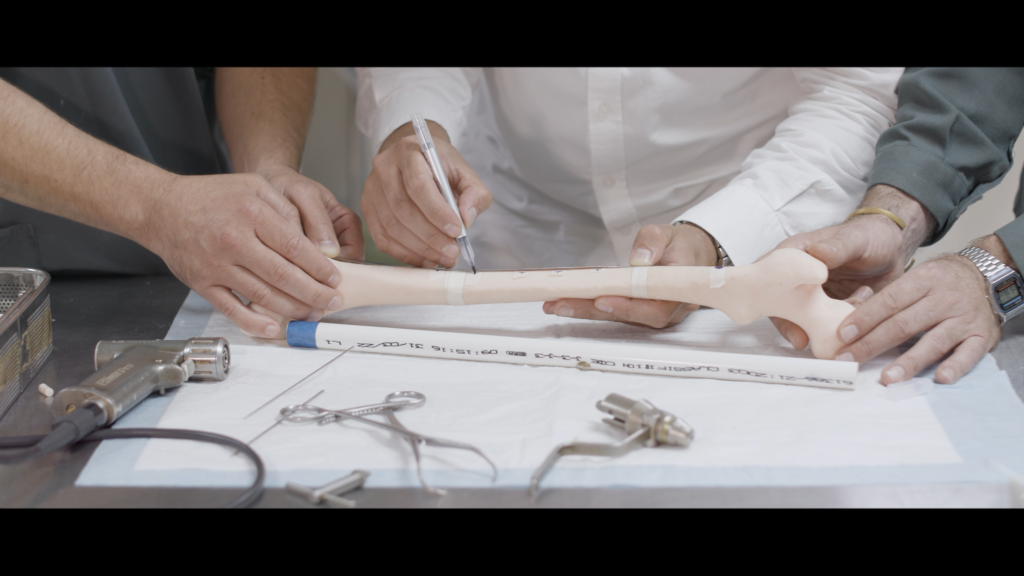
Bone Flute is an artwork – a memento mori, or ‘reminder of death’. Memento mori appear in European art going back thousands of years, but mortality as a subject of art must have very wide application across cultures. A modern memento mori that has been in the news again recently (March 2024) is Damien Hirst’s series of dead animals preserved in formaldehyde in glass cases, which started with a tiger shark inThe Physical Impossibility of Death in the Mind of Someone Living (1991).
At art school I learnt about memento mori and the related genre of vanitas, prominent in Dutch art of the 16th century. Vanitas art intends to draw attention to the transience of life, the material world and mortal ambitions and attachments. The iconic work of this type, which made an impression on me then, is The Ambassadors painted by Hans Holbein the Younger in 1533. It shows the two wealthy and important men of the title surrounded by their accoutrements – but intruding into the image is a distorted image of a skull, clearly identifiable only when seen from a particular angle. I made an artwork referencing this painting in 2006, titled Jubilee – a South African soccer trumpet or vuvuzela branded for the Orlando Pirates football team (white skull on black ground) mounted on a wall at the angle of Holbein’s skull, and blown by a hidden source triggered by a burglar alarm motion sensor.
Holbein made an earlier work on the theme of death, his book of woodcuts The Dance of Death (1523–5) which shows death personified as a skeleton taking away mortals from all walks of life: “in a series of action-packed scenes Death intrudes on the everyday lives of thirty-four people from various levels of society — from pope to physician to ploughman” (The Public Domain Review). He was building on the existing iconography of the danse macabre, which had been depicted in European art for the previous two centuries as death dancing with the living – people from all stations of life from royalty and clergy to servants, peasants and beggars – responding to the plagues that swept medieval Europe, indiscriminately killing millions. His woodcuts were a retake on the genre, not showing the iconic ‘living dancing with the dead’ (a carnivalesque gesture of merriment in the face of mortality) but showing living skeletons playing musical instruments and engaging in pageantry.
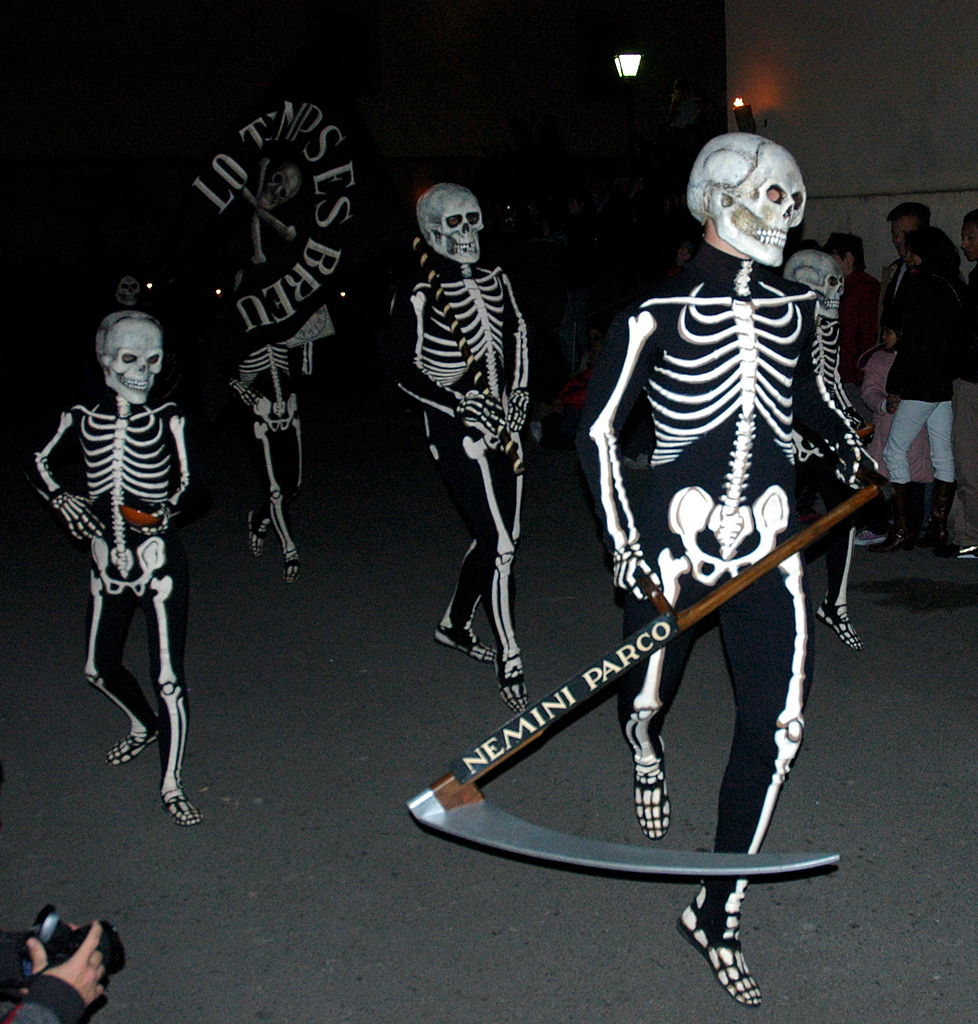
Bone Flute started out as an idea for another artwork, Club, some 10 years before my work on this art-research project at HUMA. I had sketched out and mocked up the concept back in 2011 as an independent artwork soon after finishing my PhD (a critical design study focused on the South). Club was intended to present a replica of my femur as the most basic of weapons, the club. I felt that this artwork might carry implications about our innate potential for violence, perhaps; with a pun in the title on weapon and exclusive social group. When I shared the idea, several people pointed out to me the opening scenes of Stanley Kubrick’s iconic science-fiction movie 2001 – A Space Odyssey (1968) in which an early hominid is introduced to the use of violence, represented by their wielding of a femur as a weapon (I’d seen the movie a long time before, so perhaps the image was embedded in my mind already). The hominid tosses the bone up into the air after smashing something with it, and as it spins, the film cuts to a space station orbiting the earth, suggesting the lineage between weaponry, violence and advanced technology.
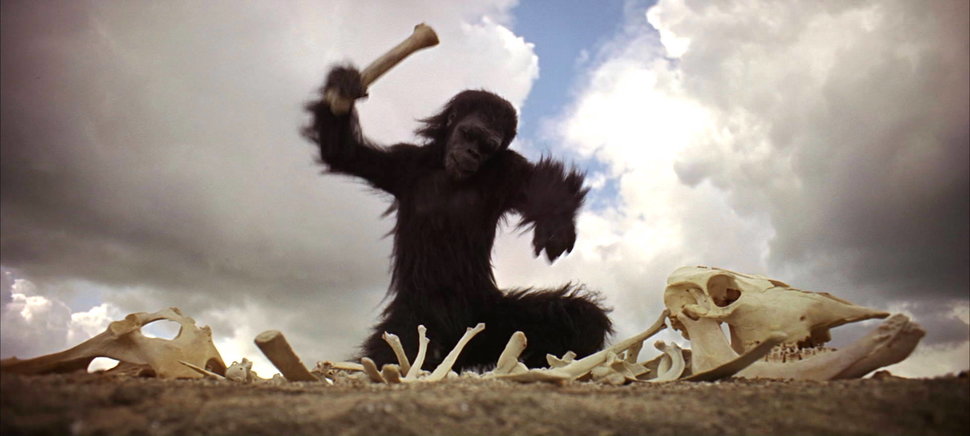
I have a long relationship with technology in my work as an artist and researcher, and particularly with technology and the body. As an art student, in completion of my undergraduate degree in Sculpture I used salvaged electronics and waste synthetic materials to build bone-like sculptural sound installations, through which I DJed live, on an industrial site (Transwerk, 1997). As a Masters student in Interactive Telecommunications, I made a series of projects to turn myself into a human turntable stylus, crafting attachments to my arm that enabled me to read the colour and textures of my environment and turn them into sound, via a microphone, a miniature video camera, electronics and computer software (IRSampler, 1999 – 2001). My Masters thesis work was a protective suit for protestors, which amplified the wearer’s heartbeat and made it audible outside their body (Suited for Subversion, 2002).
This last project led me to focus in my PhD work on objects designed to have functions for the user, and also to communicate to audiences: including types of functional and interventionist art, and some forms of design, such as ‘discursive design’, which focus explicitly on communication to audiences, as well as other forms of design that are ostensibly user-centred but rely on their story-telling capabilities to funder-audiences for advancement. Suited for Subversion was particularly successful at communicating to audiences. Selected for the exhibition Safe at the New York Museum of Modern Art in 2005 and later bought for their permanent collection, it attracted a great deal of media attention, and was continuously on exhibition for many years afterwards. It reached through exhibition much wider audiences than in its immediate context of use (street protest) and conveyed information about tactics, situations and subcultures via a designed object that functions in some ways like a text using form and symbol (and also, accompanied by written text). The object has a relationship both to its user, and to wider audiences.
Suited for Subversion had led directly to my concept for Club, and later Bone Flute: they were the result of a conscious intention to extend the theme in my art production that it represented: the repurposing of body parts or functions to make art objects. Suited for Subversion took my heartbeat and made it audible outside my body; my heartbeat became material for the work. What other body parts or functions could I use in this way? I thought about bone as material – this hard, persistent material that outlives us, and can be made into functional objects (I was later to learn from my medical collaborators that orthopaedic surgeons are sometimes called the carpenters of the medical world because of this quality of bone). The femur is the largest bone in our bodies and so seemed to offer the most potential utility.
I revived this work and these concepts for my research project for Future Hospitals, at HUMA, the Institute for Humanities in Africa, using it as a vehicle for collaboration with orthopaedic surgeon Rudolph Venter at Tygerberg Hospital. In the intervening years since the idea first came to me, I had refined the concept of Club further, telling a different story with it – a more sophisticated use for the bone replica – a project to make it into a flute. I knew that I’d seen the image of a flute made from a human femur somewhere; that it was an object that was out there in the world. The first visual images that formed in my mind’s eye were of a skeleton playing a flute made from a human bone, but I didn’t know where from.
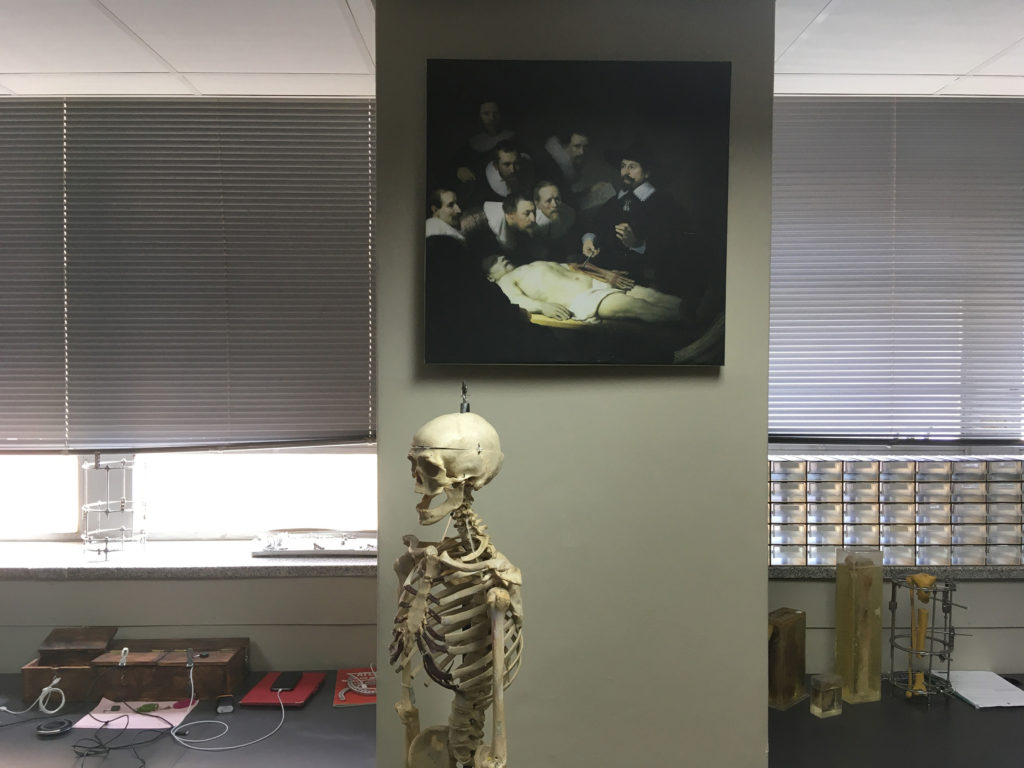
Through research I recognised that I was tapping into a range of influences that I’d been exposed to, at art school and beyond – Hans Holbein’s woodcuts from the Dance of Death, and the older iconography of the mediaeval danse macabre reproduced in popular culture, such as early black and white Disney cartoons in which skeletons in a graveyard dance and play a range of instruments made from human bone (The Skeleton Dance, 1929). Fritz Lang’s early science-fiction movie Metropolis (1927) of which I had seen a screening with live instrumentation in about 2006, includes an incidental scene in which a human skeleton plays a femur flute. Recently Rudolph sent me a scan of a page from a Tintin comic (Prisoners of the Sun, 1948) that his child was reading, in which an Incan whistle made from a human tibia appears – and I realised that I had read the same comic-book when I was a child, and that it was still on my bookshelf.
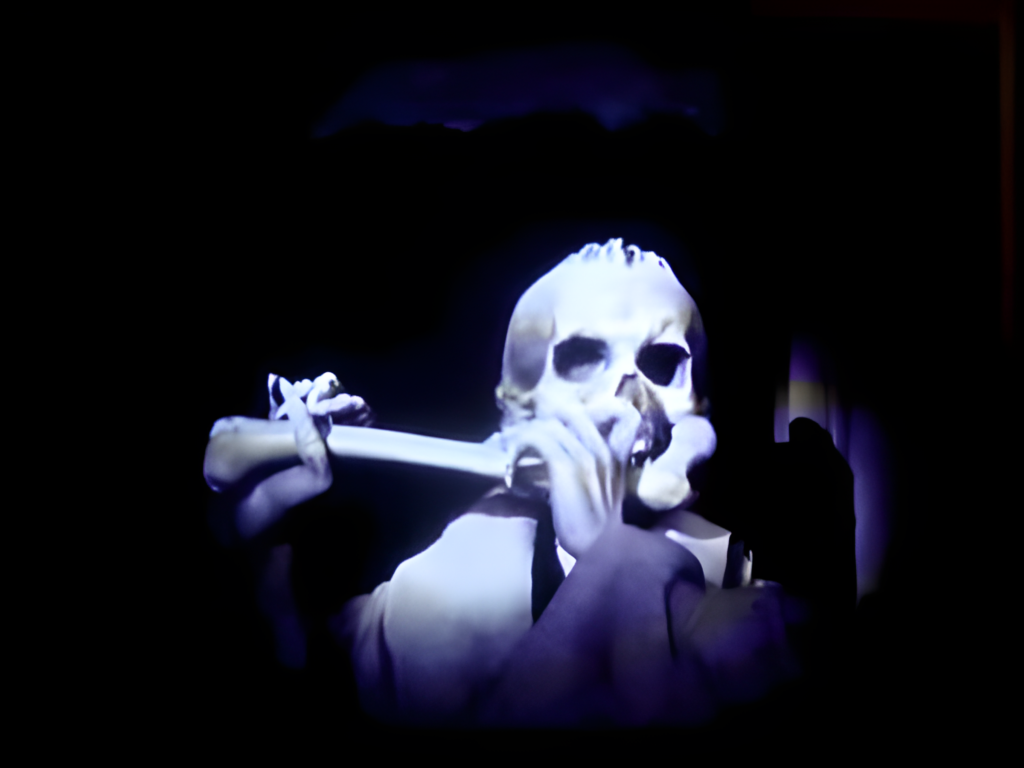
I came across archaeological and anthropological material documenting flutes made from human bone used in a range of locations and cultures, some still in practice today such as the Tibetan Kangling, a ceremonial flute made from a human femur, and I found confirmation of human bone flutes found in many different parts of the world, from North and South America to Europe, Asia, and Oceania. Kangling are made from the bones of holy men or of criminals, and this dichotomy is surmised in other examples of the use of human bones too: they might be the bones of loved ones to keep them close, or the bones of enemies to hold power over them after death. And apart from human bones, flutes made from the bones of animals are the earliest examples of musical instruments yet identified by archaeologists.
All of this is to say that I found confirmation that with this idea for an artwork I was tapping into a rich vein of symbolic material, spanning wide histories and geographies, across cultures. These are signs to me of material that is good for art-making: resonant images and symbols that will effectively attract the attention of wide audiences, by reminding them of ‘something’, even if they are not consciously aware of what that is (as I wasn’t at first) speaking on a subconscious level with images that are proven to be ‘sticky’ and that can draw audiences into the more specific information I might want to expose them to. These types of symbols are good for attracting attention, and for evoking feelings, through sets of associations. This is archetypal and provocative material: bones normally become visible only after death, and human bones are objects charged with symbolism and significance – making them into functional objects produces a frisson, a boundary-breaking that evokes both sacrilege and ceremony.
Making my own bone into an instrument carries its only particular meanings. Making someone else’s bone into an instrument is fraught terrain: it depends very much on context and relationship to determine the ethics of doing so. I think that making use of one’s own body for material is disarming. It’s an act of self-possession rather than of potential exploitation. Such an act can still be provocative, and evoke feelings of shock, horror or revulsion in audiences, as in body-based works by artists such as Stelarc, who uses technological apparatus to pierce, manipulate and permanently alter his flesh. But I intended to use technology to work on my body in a different way: to use digital technology’s capacity for reproduction and simulation to painlessly extract and reproduce a hidden part of my anatomy. While a copy of my bone could now be seen and manipulated outside my body, the original would remain in place.
Normally, a person would have to be dead to have a tune played on their bone. I intended to create a situation in which a living person could do so. Where Rudolph’s use of the technology allows a preview into a living body before opening it up through surgery, in order to heal it, my use of the technology implies a preview of the body after death, when the flesh has disintegrated around the bone. A phrase that came into my mind in devising the work is that I would be making myself “the Pied Piper of my own demise”, playing on another association for the flute – as an instrument for charming and enticing. The Pied Piper of Hamlin in the European fairy tale I heard as a child stole the villagers’ children, vanishing them into the earth. Was the story told by my own artwork that I was leading myself towards death? I imagined myself naked, performing in a spotlight on a dark stage, playing a haunting tune on a flute made from my own bone. This was a work about mortality, for sure, the bones beneath the skin, and the inevitably of death – a memento mori. But this work would also be about music and emotion, about the poetry that comes from our human awareness of death, and the desire to celebrate life in the face of it – one of the messages contained in the danse macabre or the Mexican Day of The Dead. The ‘healing’ in my work, in comparison to Rudolph’s, would not be for an individual patient, but perhaps a psychic healing for audiences in the story it tells.
Most of these thoughts, ideas and interpretations of what this work would mean appeared to me through the process of research and design, over many years, before the object was made. To move it from proposal to object would require more work, draw in further material, and produce unforeseen outcomes. This required opportunity, collaboration, relationship-building, processes and technologies, objects and interactions – a furtherance of the research through action. Action-based research perhaps? By the time I was introduced to Rudolph, I was primed for the opportunity to make this work. Though I did need a musician to work with… and this introduction came via an unexpected route. Because the medical scan that I’d needed to print a copy of my femur had turned out incomplete, Rudolph referred me to the medical technology company CranioTech, who had the skills and technology needed to perfect the model for printing. Their director Bernard Swart was also a musician, and his main accompanist and friend was a flautist and instrument maker, Alessandro Gigli – so that when I acquired the means to print the femur, I was also introduced to a musician who I could collaborate with on turning it into a flute.
One of the elements of the work that I hadn’t anticipated until entering into a relationship with Rudolph to realise it, was the chance to make a performance of the process of fabricating it. My concept for turning the printed bone into a flute – drilling holes into it in the right places – was to operate on it in Rudolph’s laboratory, in the same way as he would operate on his 3D-prints in rehearsal of real operations. Though in this case, the simulation was not a rehearsal for the real thing, but the thing itself. I thought of it as some kind of art performance – I wasn’t sure what it would yield, but intuitively I felt that echoing Rudolph’s processes, on the same site and using some of the same technologies, would open up opportunities for bringing further material into the project. One of the outputs of this performance, apart from the bone flute itself, would be a film of the operation, that could accompany the artwork on exhibition. My partner Dara Kell is a filmmaker, and she agreed to shoot and edit a film for the project.
Dara and I worked before the operation to plan out aspects of how we would film it. We looked over photographs of the laboratory that I’d taken on my first visit there, reviewing the colours and forms in the space. We checked with Rudolph if he’d be wearing his green surgical scrubs, and asked Alessandro if he’d be wearing a plain white shirt as he had been so far in our meetings to prototype the flute – and I selected a worker’s jacket which I wear regularly as a complementary colour. During the operation, part of my role was to keep thinking about how what we were doing would be captured, and checking in with my partner that she was getting what she needed for her part of the project. So it was that the four of us met in the orthopaedics 3D-printing laboratory of Tygerberg Hospital, my partner behind the camera, and Rudolph, Alessandro and I at the operating table, to produce both Bone Flute and a film about its making.
The three of us operating on the femur worked harmoniously together, measuring and drilling the holes, determining what needed to be done, consulting with one another, picking up our own self-determined actions and handing off tasks to each other. There were some lovely moments. We needed to drill a hole in the knee-bone end of the femur that had to be inline with the internal cavity of the bone, for the outlet of the flute, and Rudolph showed us how he would locate this on a patient, drawing a line between two anatomical protuberances: a distinct overlap between the concerns of the projects, medical and musical. Rudolph told me how impressed he was with Alessandro’s ability with the tools to carve into the bone – he’d be an asset in the operating theatre, he said.
Rudolph’s enthusiasm and excitement at how we were applying some of his materials and processes for an unfamiliar, creative purpose was palpable. I was impressed by how well we all worked together for the first time – it’s definitely not a given that that will happen. Something that occurred to me looking back on the experience was the generosity displayed by all participants; we were reaching out, each from a different domain – surgery, music, art and filmmaking – and finding common ground. Medicine, as Roger Kneebone points out in his book Expert (2020) p.7 “is not a science, a craft or an art, but a practice which combines all three”; and there is commonality between experts from different fields: “being expert is about how you think and see things… it’s not simply defined by what you create”.